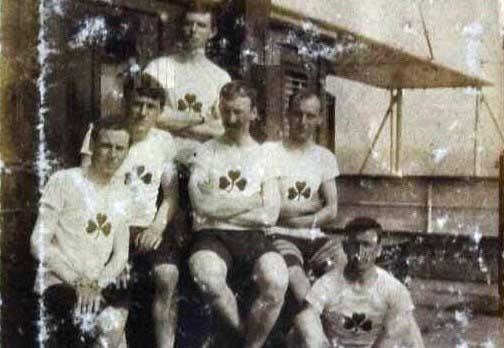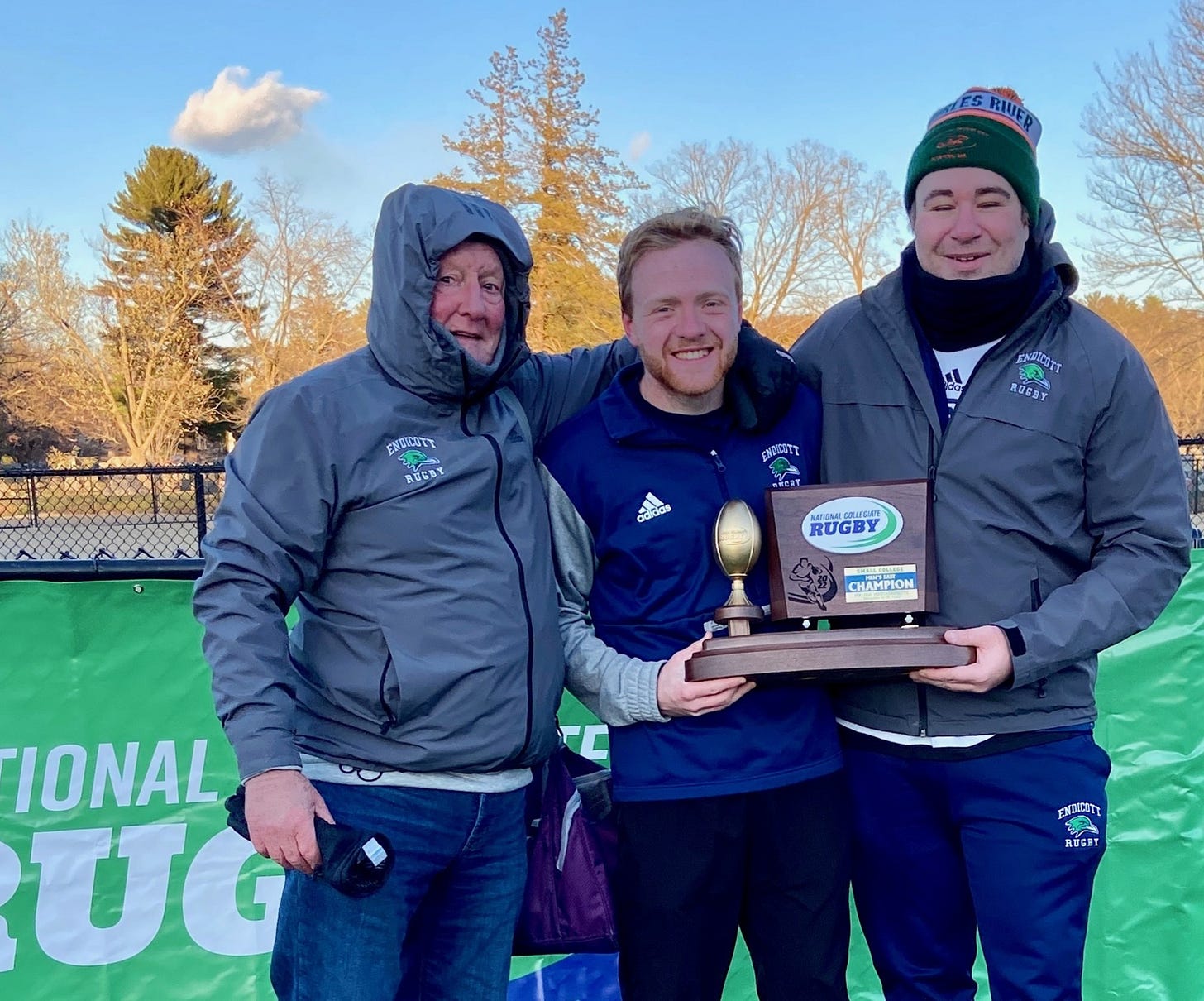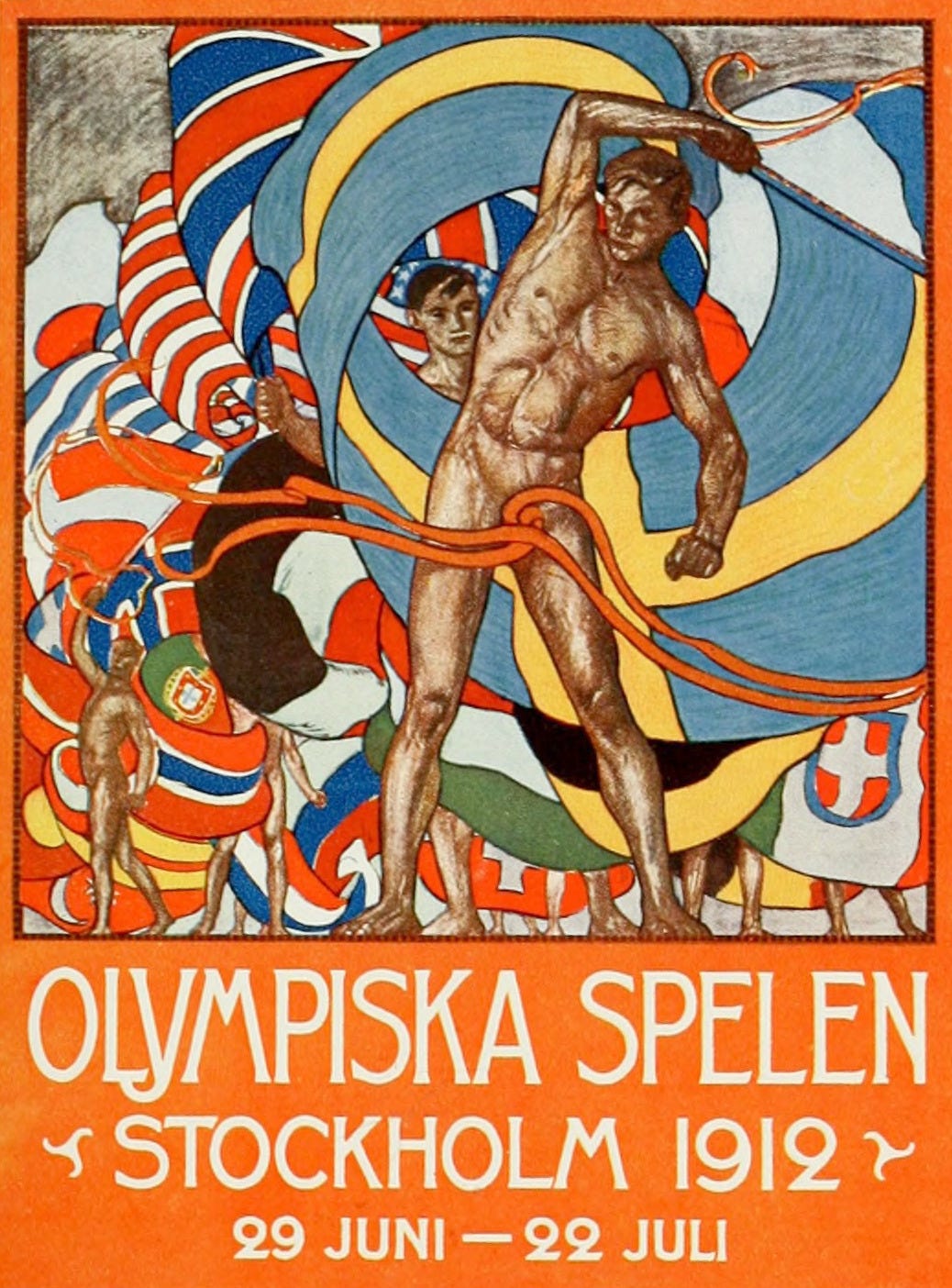Under No Crown: The Largely Forgotten Story of the 1912 Irish Olympic Cycling Team
A century after they rode in quiet defiance, we remember the Irish cyclists of the 1912 Olympics. These athletes raced not for empire but for the shamrock. On St. Patrick’s Day 2025, their story rides
The world in 1912 was restless. Tensions ran high as nations armed themselves for an approaching storm of war. Empires that had stood for centuries were beginning to crack (Lee, 2012). But before war would consume the world, its greatest athletes gathered in Stockholm, Sweden, for the Olympic Games.
Among them was a team of six Irish cyclists, men who had trained on the beautiful green roads of Eire, roads that wound through fields and villages still under British occupation. For centuries, Ireland had suffered under English rule, enduring land seizures, economic oppression, and violent punishment for those who dared to call for independence (O’Connor, 2009). These men arrived in Stockholm prepared to compete in one of the most grueling events of the Games. The road race stretched 200 miles around Lake Mälaren east of the capital city, beginning in the dead of night at 2 AM (Smith, 2021).
I first heard about the Irish Olympic Cycling Team from my former rugby coach, Desmond Crowley, who has been a mentor to me for the past five years. His grandfather, Bernard J. Doyle, was one of the men who took on this brutal race. But as Desmond told me, the story of these cyclists was about more than just sport.
In Stockholm, Ireland was given the rare chance to compete as a separate team, apart from England and Scotland, yet the athletes were still expected to race under the Union Jack. Some may have even been issued British uniforms for competition. But the passionate and patriotic Irish athletes made a different choice. They wore white jerseys, marked only with a green shamrock (Murphy, 2016)
Ireland in 1912: A Nation on the Brink
In 1912, Ireland was not an independent nation. Still under British rule, it was officially known as Eire. Nationalist sentiment was rising, fueled by decades of struggle and the growing demand for Home Rule. The movement advocating for Irish self-governance had gained momentum, but opposition from Britain and powerful unionist factions in the north ensured that any progress was met with resistance (Jackson, 2003). Tensions between those pushing for independence and those loyal to the Crown were growing. Within a few years, these divisions would erupt into open rebellion, and Ireland’s fight for sovereignty would take center stage (McConnel, 2020).
Sport played a key role in shaping Irish identity at this time. The Gaelic Athletic Association had already established itself as a force in promoting traditional Irish games like hurling and Gaelic football, reinforcing a cultural distinction between Ireland and Britain (Maume, 2019). While Ireland actively participated in globally recognized sports like track and field, rugby, and cycling as well.
At the 1912 Olympics, Ireland and Scotland were allowed to enter their own teams and athletes, even though they technically all fell under Team Great Britain. Scottish athletes competed in uniforms featuring the Union Jack, standing alongside their English teammates. Ireland had a better idea. The Irish cyclists arrived in Stockholm not as representatives of Britain, but as Irishmen. They wore white jerseys, marked only with a green shamrock, making it clear who they were racing for (Sugden, 2017). To further reinforce their national pride, they rode durable Lucania bicycles, built in Dublin, ensuring that even their equipment reflected their Irish identity.

The 1912 Irish Cycling Team
The six men who represented Ireland in the 1912 Olympic road race were not just cyclists. They were workers, engineers, and young competitors, united by hard work and a grinding attitude. They trained on rough Irish roads, pushing themselves through long miles without modern sports science or professional coaching. They prepared for one of the toughest races in Olympic history, 200 Miles. (Murphy, 2016).
Bernard J. Doyle, 24 years old at the time, worked as an accountant for the Dublin Gas Company (Team GB, 2023). He lived in Dublin, not far from where the events of Bloody Sunday 1920 would later unfold during the Irish War of Independence (O’Connor, 2009). A proud Irishman, he was fluent in Irish and a member of Cumann na nGaedheal, a cultural organization dedicated to preserving and promoting the Irish language (The Irish Times, 1912). Every morning, Bernard started his day with a big Irish breakfast of Irish bacon, sausage, eggs, blood pudding, cereal or porridge, toast, and a pot of strong tea. This would carry him through long days of work and cycling.
Michael Walker, 27, and his younger brother John Walker, 24, came from Dublin as well. Michael was one of the strongest riders on the team, known for his endurance. Just a few years after the Olympics, he would serve as a courier for the Irish Volunteers during the Easter Rising (O’Connor, 2009). John, a long-distance rider like his brother, also became involved in nationalist activities as the two would later use their bikes for a more dangerous cause, serving as a courier for the Irish Volunteers during the Easter Rising.
Francis Guy, 27, was from Belfast. A sanitary engineer by trade, he would later dedicate himself to improving cycling safety in the city, advocating for better traffic regulations (The Irish Times, 1912). Ralph “Arjay” Mecredy, 24, the son of famed Irish cyclist Richard J. Mecredy, had a deep understanding of the sport and was known for his endurance. Matthew Walsh, 25, remains the most mysterious of the group, with few records of his life beyond the race.
These men were not privileged athletes with easy paths to Olympic competition. They worked hard jobs, trained on their own, and relied on their pride to push through grueling rides. In Stockholm, they would line up against the best in the world, knowing that the roads of Ireland had prepared them for whatever lay ahead (Sugden, 2017).
The 1912 Olympic Cycling Event: A 200 Mile Test of Will
At 2 AM on July 7, 1912, 123 cyclists lined up in the darkness outside Stockholm, preparing for what would be one of the most punishing races in Olympic history. The course stretched 200 miles around Lake Mälaren, Sweden’s third-largest lake, on roads that were little more than dirt paths in places. For the first time in Olympic history, electronic timing was used to record results, marking a shift in how sports were evolving with technology (Smith, 2021). The challenge, however, remained the same, pure endurance.
The field of competitors reflected the shifting political landscape of the time. Cyclists from the Russian Empire and Austro-Hungary, two empires that would collapse within a decade, lined up alongside riders from newly formed nations eager to prove themselves. Ireland, though competing under the British umbrella, was determined to stand apart.
There were no pacers allowed. Riders had to navigate the open roads alone, stopping at designated checkpoints to sign in as proof they had completed the required distance. The conditions were unforgiving. Sweden was still a right-hand drive country at the time, adding another layer of complexity for riders from left-hand drive nations like Ireland and Great Britain. The roads, uneven and unpaved in places, made crashes inevitable. One competitor, Swedish rider Karl Landsberg, was hit by a motor-wagon and dragged behind it near the start of the race, ending his Olympic hopes early (Lee, 2012). By the end of the grueling race, only 94 of the 123 riders would finish.
For the Irish team, the race was a disaster from the start. Bernard Doyle suffered multiple misfortunes, including two punctures, getting knocked down by a Swedish rider, losing his way on the course, and falling twice more before finishing (The Irish Times, 1912). The Walker brothers, Michael and John, struggled with mechanical failures and exhaustion, pushing through despite the mounting challenges. Francis Guy, despite several falls and a puncture, managed to finish within five minutes of the fastest Irish rider, showing remarkable resilience.
South African rider Rudolph Lewis won the race in 10 hours, 42 minutes, and 39 seconds, averaging a remarkable 18.64 mph on the rough roads. Frederick Grubb of Great Britain took silver, while Carl Schutte of the United States claimed bronze. In an unusual Olympic tradition, medals were not awarded at the stadium but instead handed out at a restaurant days later by the head of the Swedish Olympic Cycling Committee (Smith, 2021).
The Irish riders may not have won medals, but they finished a race that had broken many others. Their performance was a testament to the endurance and determination that defined their team, a spirit that mirrored the struggle of their homeland.
What Happened Next?
The 1912 Olympic road race had tested every rider who lined up at the start in Stockholm, and the Irish cyclists had endured more than their fair share of setbacks. Though they did not place among the medalists, they finished a race that many others could not. While the Irish team’s standings were unremarkable on paper, their participation represented something far more important, a moment where Irish athletes stood apart on the world stage.
For the riders themselves, life continued in different ways. Bernard J. Doyle found some success in cycling after the Olympics, winning the Stevens Cup in a 50-mile handicap race just weeks after the Games (Team GB, 2023). His love of the sport remained, but his career soon shifted back toward his work as an accountant in Dublin. Bernard Doyle’s great-grandson, Terry Kennedy, carried on the family’s Olympic legacy over a century later, proudly competing in the Tokyo 2020 (held in 2021) and Paris 2024 Olympic Games as a rugby player, this time wearing an Irish uniform for an independent Team Ireland, completely separate from Team Great Britain.
A few years after competing in Stockholm, Michael Walker joined the Irish Volunteers, the paramilitary group that would lead the 1916 Easter Rising. During the rebellion, he served as a courier for the Irish Republican Army, using his cycling skills for a much more dangerous purpose, delivering messages between rebel leaders under the threat of arrest or worse (O’Connor, 2009). His brother, John Walker, also became involved in nationalist activities, though records of his exact role remain unclear.
Ralph "Arjay" Mecredy, a cyclist and student of medicine, survived the sinking of the RMS Lusitania in 1915, one of the most infamous maritime disasters of the era. The ship was struck by a German U-boat off the coast of Ireland, killing nearly 1,200 people and pushing the United States closer to entering World War I (The Irish Times, 1912). Mecredy was among the lucky survivors, but his career in cycling faded into history.
Francis Guy remained dedicated to the sport, not as a competitor but as an advocate. In Belfast, he became a strong voice for safer cycling conditions, campaigning for better traffic regulations to protect riders in the city (Sugden, 2017). His work was ahead of its time, recognizing the dangers cyclists faced in urban environments long before formal road safety laws existed.
When the 1912 Irish Cycling team raced in Stockholm, they were not just competing for medals but asserting Irish identity at a time when their country was still struggling to be recognized as its own nation. Unlike the Scottish and English athletes who wore the Union Jack, the Irish team made a deliberate choice to stand apart. Their white jerseys, marked only with a green shamrock, were a proud act of distinction and unity, a statement that they were not British athletes, but Irishmen (Sugden, 2017).
Only four years later, Ireland’s fight for independence erupted with the 1916 Easter Rising. Led by Irish nationalists, the rebellion lasted for six days before being brutally suppressed by British forces. Its leaders, including Patrick Pearse and James Connolly, were executed, but their cause only grew stronger in the years that followed (Jackson, 2003). By 1922, after a war of independence, Ireland gained its freedom from British rule, establishing the Irish Free State. However, six counties in the north remained under British control, a division that persists to this day.
Over a century after the 1912 Olympics, Ireland stands as a proud and independent nation, with a deep connection to its sporting heritage. The world has little remembered the men who raced in Stockholm that July. But today, on St. Patrick's Day 2025, we acknowledge their act of defiance and their unwavering commitment to finishing that grueling 200-mile race with a shamrock on their chest.
A special thanks to my former rugby coach and mentor, Desmond Crowley, for not only being an incredible teacher in practice and before matches but for sharing this small piece of his family history. Because of him, we have had the chance to appreciate and reflect on the legacy of these Irish cyclists, their determination, and the place they hold in the story of Ireland.

References
Jackson, A. (2003). Home Rule: An Irish History 1800-2000. Oxford University Press. https://doi.org/10.1093/homerulehistory
Lee, J. (2012). The 1912 Olympics: A World on the Brink. Oxford University Press. https://doi.org/10.1093/1912olympics
Maume, P. (2019). The Gaelic Revival and Irish Nationalism. Cambridge University Press. https://doi.org/10.1017/gaelicrevival
McConnel, J. (2020). The Struggle for Irish Independence: Political and Cultural Resistance. Routledge. https://doi.org/10.4324/irishindependence
Murphy, D. (2016). Irish Athletes and National Identity. University of Dublin Press. https://doi.org/10.1093/irishathletics
O'Connor, P. (2009). The Irish Struggle for Independence: A Historical Perspective. Cambridge University Press. https://doi.org/10.1017/irishindependence
Smith, J. (2021). Cycling and the Olympics: A Historical Retrospective. Routledge. https://doi.org/10.4324/cyclinghistory
Sugden, J. (2017). Sport and Society in Ireland: National Identity and Athletic Resistance. Manchester University Press. https://doi.org/10.7227/sportandireland
Team GB. (2023). Bernard Doyle - Olympian Profile. British Olympic Association. https://www.teamgb.com/athlete/bernard-doyle/6vgVOVu6AIvFJg0ZAAwD1u
The Irish Times. (1912). The Irish Cyclists at the Stockholm Games. The Irish Times Archives. https://doi.org/10.1017/irishtimesolympics






Many thanks Ryan, super research and update of our knowledge. Best regards Bernard Kennedy, Des's cousin and Bernard (Barney) Doyle's grandson.